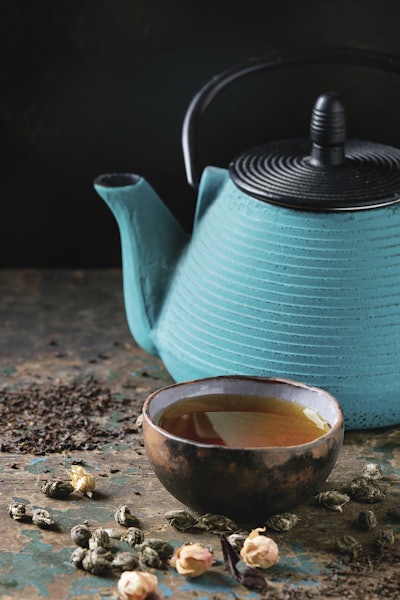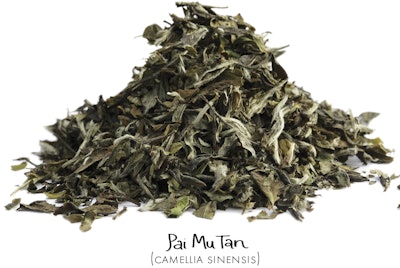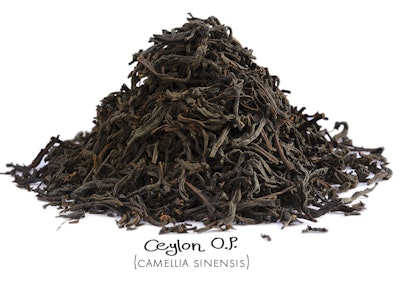 Courtesy of Getty Images
Courtesy of Getty Images
Amy Sbarra has been serving clients complimentary iced and hot tea at her Sanibel, Florida-based salon and spa, Spatini Teabar, since it opened in 2009. “At this point, I have more than 40 different teas here,” says Sbarra, who also sells tea in her retail area. “The ones that we go through a lot are a pineapple coconut black tea and a cinnamon black tea that’s absolutely delicious.” Lauded for its many health benefits, tea is a natural fit to serve salon and spa guests, especially at wellness-oriented businesses like Sbarra’s, which offers nail, hair and skincare services, along with massage, using many organic products and nontoxic polishes.
Related: Help Clients Relax with these Spa Products
All types of tea are derived from the Camellia sinensis plant and are packed with healthy nutrients. “Tea leaves contain protein, fluoride and vitamins A, B, C, D and E,” says Lisa Boalt Richardson, assistant manager of education at the World Tea Academy and author of Modern Tea. “But what fascinates the researchers most are the compounds found in tea, the polyphenols (antioxidants), amino acids and methylxanthines.” (Caffeine is one methylxanthine, for example.)
So, what makes green tea different from black tea? “The difference is the post-manufacturing process—basically, what’s done after the leaf is picked in the field,” Richardson says. “All tea has antioxidants in it; [the post-manufacturing process] changes it from one antioxidant to a different type of antioxidant. Drinking different classes of tea throughout your day is probably the best way to get the health benefits of all of the different types of antioxidants.” Considering serving tea at your salon? Learn more about World Tea Academy’s online classes on everything from the health benefits of tea to tea terroir—open to all—at worldteaacademy.com.
Check out our handy primer on common tea types:
 Courtesy of Getty Images
Courtesy of Getty Images
White Tea: The lightest and least processed of tea types, white tea is produced by simply allowing the plucked Camellia sinensis leaves to wither and dry.
 Courtesy of Getty Images
Courtesy of Getty Images
Green Tea: To produce green tea, the plucked tea leaves are allowed to wither a bit and then rolled, which breaks open the cell wall to allow oxidation to occur. Then, heat is applied using one of two methods that makes the leaves stay green: steaming (the Japanese style) or pan-firing in a wok or heated drum (the Chinese style). Afterward, the tea leaves are dried.
 tea services
tea services
Pu-erh or Dark Tea: Pu-erh is a fermented tea that’s produced using a similar process to Chinese green tea, but the leaves are then allowed to go through a microbial fermentation and further oxidation.
 tea services
tea services
Black Tea: Described as fully oxidized tea, black tea is produced by rolling withered tea leaves and then allowing them to sit and fully oxidize before heat is applied at the end.
 tea services
tea services
Oolong Tea: Considered the most complicated tea to produce, oolong is partially oxidized. The process requires gently rolling the plucked, withered tea leaves and then heating them a bit to stop the oxidation. This process may be repeated several times (taking up to 24 hours!), allowing oxidation to happen slowly over time, developing deep flavors and aromas in the tea.
-Lotus Abrams
[Images Courtesy of Getty Images]
This article was first published in the August 2018 issue of NAILPRO











